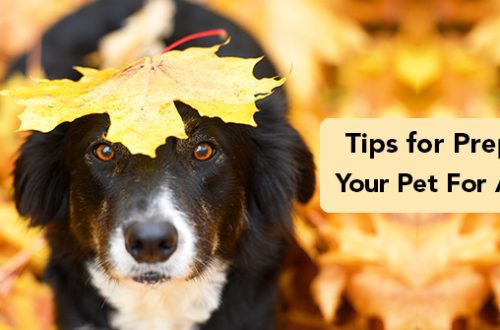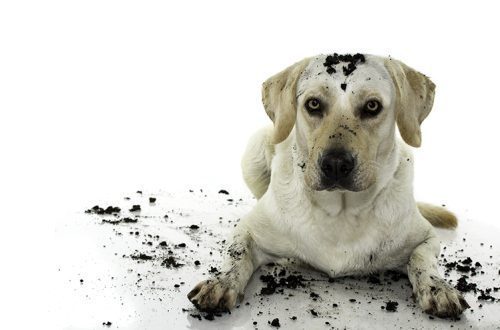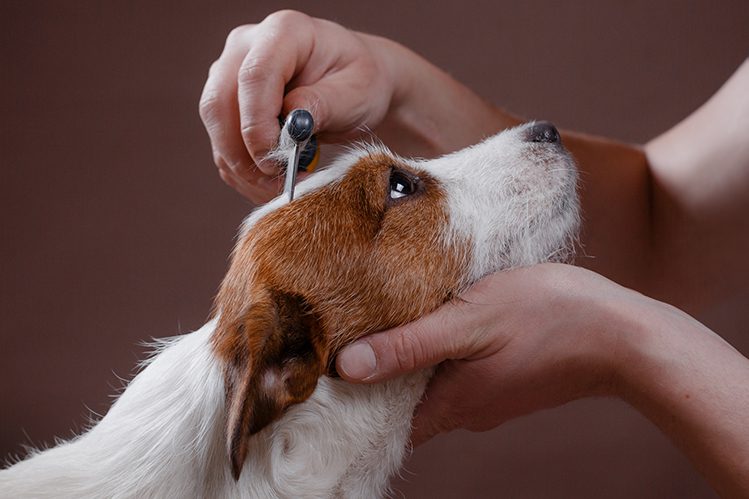
Trimming: what is it and who needs it?
Trimming is one of the procedures offered by grooming salons and private masters. What it is? What kind of dogs is it for? How necessary is the procedure? About this in our article.
Trimming is the removal of dead hair by plucking. Do not confuse it with combing and cutting. This is a special procedure that is not assigned to all dogs and has not an aesthetic, but a health-improving and hygienic function.
In the process of evolution, some rough-haired dogs have lost the ability to normal shedding. Dead hair was removed during the hunt, while the dog made its way through dense thickets for prey. What about dogs that didn’t hunt?
Most of the dead hair remained on the dog’s body, clinging to the undercoat and neighboring hairs. Because of this, the skin could not breathe, bacteria multiplied on it, and the coat became tangled and lost its appearance. Trimming solved the problem. Why exactly him, and not combing or cutting?
The reason is especially the coat. In rough-haired dogs, it consists of two layers:
– soft undercoat, which serves to regulate body temperature and protect against moisture
– hard guard hairs that protect the skin from damage.
Coarse hair thickens from the base to the tip. It “sits” tightly in the skin and continues to hold on after death. If you cut it instead of plucking it, only a thin base will remain. Over time, the coat will become sparse, faded and soft, like fluff. It will lose its shape, and the dog’s skin will remain defenseless against external negative factors. But if the dead hair is removed by plucking, exactly the same coarse hair will grow in its place, as prescribed by the breed standard.

After several haircuts, the dog’s coat will change its structure and it will be impossible to restore the natural coat. She will no longer be neat and will not be able to perform her natural functions.
Trimming is necessary for the neat appearance of the dog, its health and even for the convenience of keeping the dog. In addition to updating the coat, he:
– stimulates blood circulation
– improves the quality of wool: makes it thicker, denser, shiny and saturated
– allows you to maintain the shape of the coat
– maintains the health of the skin: due to the removal of old hair, the skin breathes and pathogenic microflora does not develop on it
– after trimming, you do not need to regularly comb and cut your pet
— trimming solves the problem with molting. You can even say that he is a molt. Dead hair is removed during the procedure instead of settling on your clothes and furniture.
If you do not know if your dog needs trimming, be sure to consult with a specialist.
The procedure is usually reserved for rough-haired dogs and some mixed-coated dogs. These are, for example, Terrier and Schnauzer groups, Griffons, Wirehaired Dachshunds, Drathaars, Irish Setters and Cocker Spaniels.
How often to trim depends on the individual dog, on the condition of its coat at the moment. The specialist will recommend an individual scheme of procedures. On average, trimming is carried out once every 1-2 months, and for show dogs every 3-2 weeks.
Regular trimming corrects the shape of the coat, maintaining the flawless appearance of the pet.
It is best to carry out trimming in the grooming salon with the master. With experience or under the supervision of a specialist, the procedure can be performed right at home.
What to pay attention to? Without proper skill, there is a risk of pulling out not only old, but also new hairs. This will be very painful for the pet and will not benefit his coat.
Trimming can be done manually without a tool (this procedure is called plunking) and with the help of special trimmers (the so-called mechanical trimming, or stripping).
When choosing the first option, for convenience, it is better to use special rubber fingertips. Thanks to them, the hair will not slip out of the fingers and the procedure will take less time.
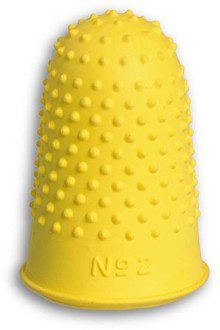
The second option involves the use of special tools, which are called “trimmings” (trimming knives). These are special toothed products that help the groomer evenly pluck out dead, stiff hairs. Despite the name (“knife”), this tool is not sharp. Its task is to pluck, not cut the hairs.
There are a huge number of trimming models. The most common are metal and stone.
Metal trimmings are available with different frequency and height of the teeth to work on different areas and on wool of varying hardness.
Compare the frequent trimming Stripper Fine and the rare Stripper Medium from Show Tech:

Stone ones also come in different shapes and densities (for example, 13 mm Comfy Stripping Stick and Stripping 9x6x2,5 cm trimming stone). Stone trimmings provide a tighter grip on the hair and gently remove hairs even in hard-to-reach places, without cutting the hair.
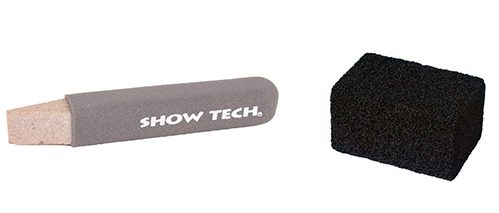
Trimming should not cut the coat.
Various models of trimmings take into account the characteristics of the coat of a particular dog. To find the best tool for your pet, be sure to consult a groomer.
Wool does not need to be washed before trimming: greasy hairs are easier to capture.
Before the procedure, you need to comb the hair and untangle the tangles (in extreme cases, remove them with scissors).
Wool is plucked strictly in the direction of growth.
With manual trimming, carefully pluck the hairs with sharp and clear movements. When mechanical, hold the tool in your hand and press the wool against it with your thumb. Make gentle but sure jerks in the direction of hair growth.
The procedure should not be painful for the dog. Light discomfort can only be delivered by removing hair from the inner thighs, armpits, head and neck.
- It is advisable to perform the procedure at a time, otherwise the new hair will grow unevenly. If the dog is tired or nervous, take half an hour breaks.
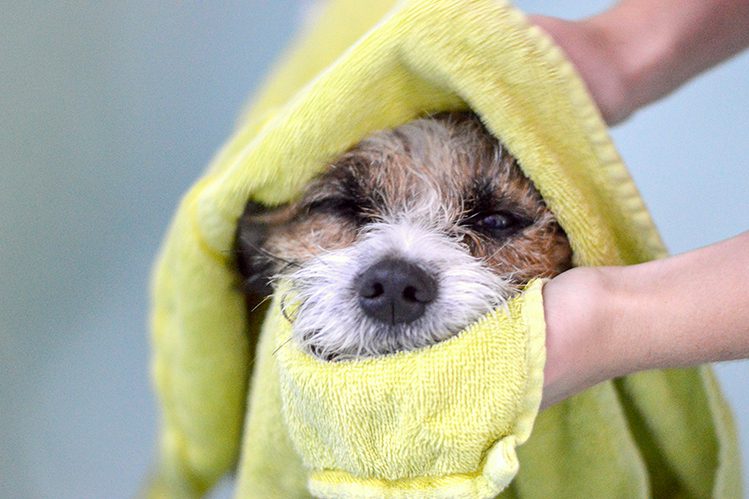
After the procedure, it is advisable to wash the dog in warm water. Don’t forget to give her a treat: she deserves it!



